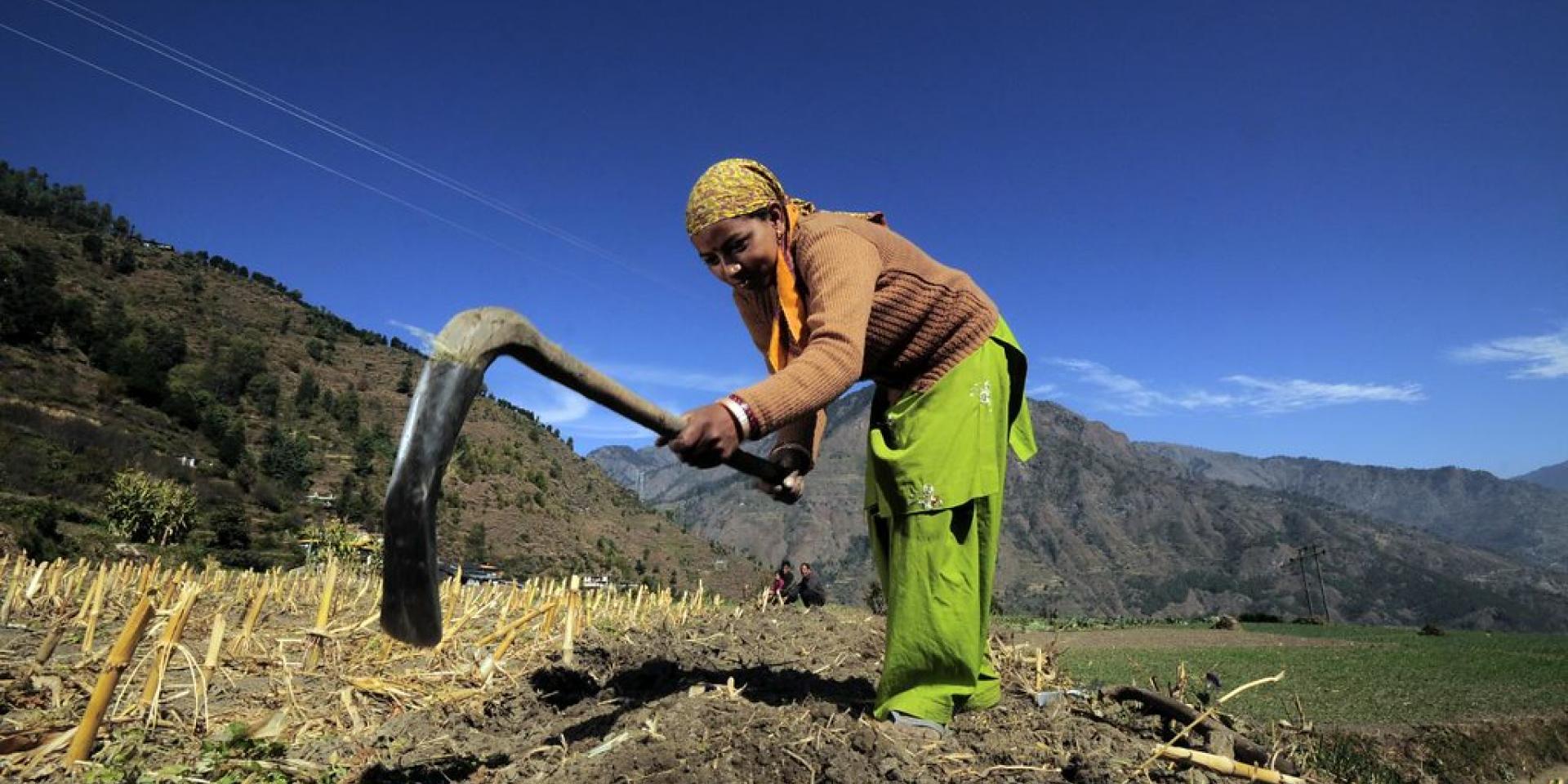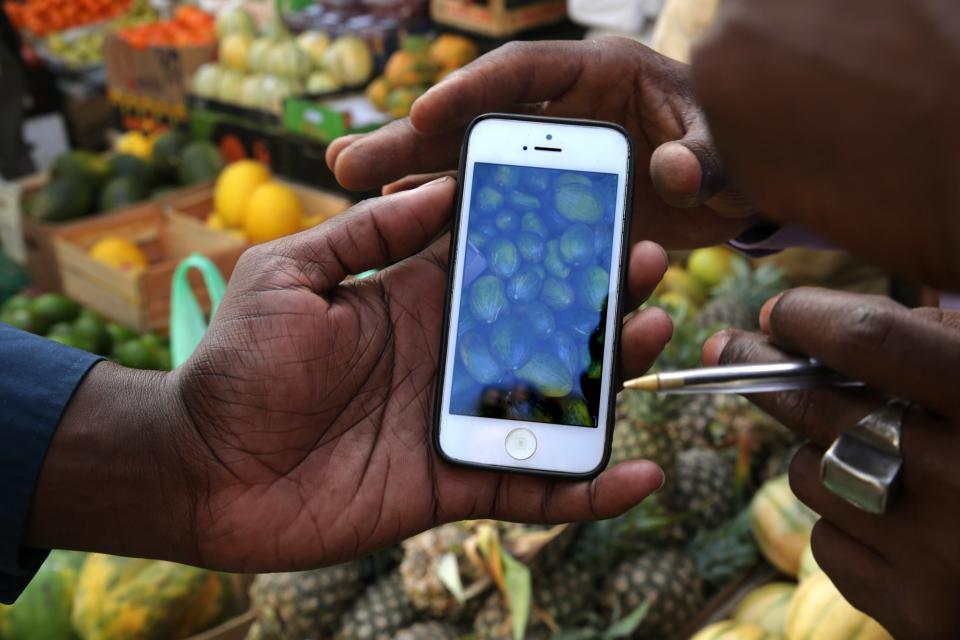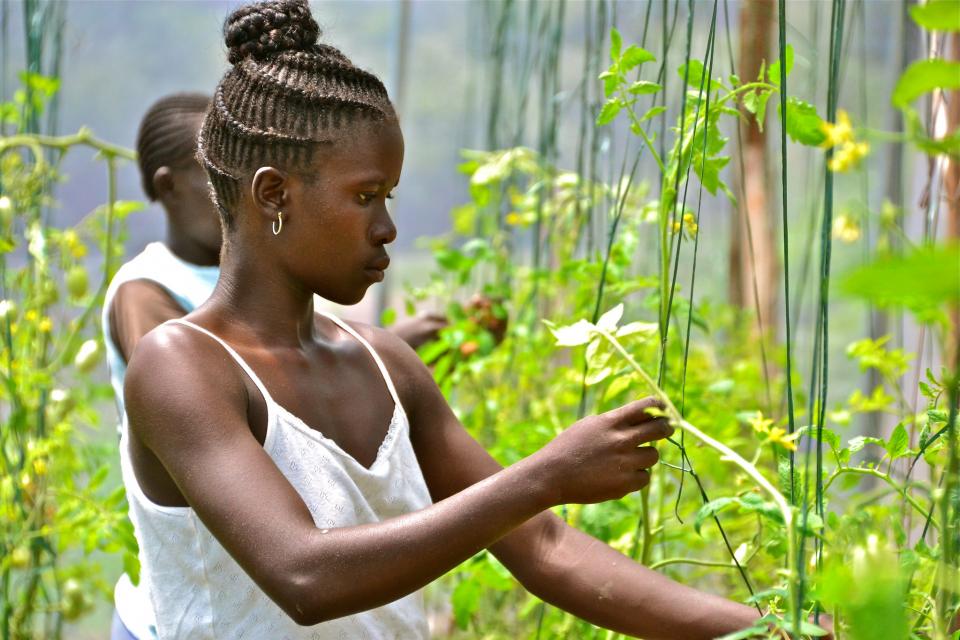Equitable gender relations are at the heart of food and nutrition security
 Credit: ©2011CIAT/NeilPalmer
Credit: ©2011CIAT/NeilPalmer
Although they bear more responsibility for their families’ food and nutrition security, women are more likely to go hungry than men, globally. Underlying social inequalities undermine household food and nutrition security, but we know that women’s empowerment—not just an honorable goal itself—can boost food security and overall health. Working with men and masculinities is another step along the path to achieving nutrition SDGs, using gender-transformative approaches; coordinated, multistakeholder approaches at multiple levels; robust policies—all informed by excellent data.
The 2023 international research conference ‘From research to impact: Towards just and resilient agri-food systems’ hosted by the CGIAR GENDER Impact Platform and the Indian Council of Agricultural Research (ICAR) took place in October 2023. In this series of blog posts, the leads of the event’s six themes reflect on key takeaways from the presentations and discussions that took place under each theme. Here Haley Zaremba explores Theme 5: Delivering nutrition, food security, and health for all, guided by theme leads Neha Kumar and Sapna Desai
Women play a significant role in agri-food systems around the world. They often shoulder higher agricultural labor burdens and are more dependent on agricultural livelihoods than men, particularly in low- and middle-income countries. Women are also often responsible for providing their families with food and nutrition security due to socially prescribed gender norms.
Despite women’s position at the heart of household food and nutrition security, however, women are more likely to go hungry than men. At a global scale, women continue to be disadvantaged by a range of discriminatory norms and practices—such as a relative lack of resources and information, low levels of decision-making power, preferential treatment of men and boys during food allocation—that negatively affect their own health and wellness, and also bear negative outcomes for their families.
Under the key theme ‘Delivering nutrition, food security, and health for all,’ researchers at the 2023 international research conference ‘From research to impact: Towards just and resilient agri-food systems’ presented a range of research digging into the gender issues at the core of global health and nutrition. They touched on a series of critical issues and future research directions, presented below, that will be critical for achieving the UN SDGs by 2030.
Underlying social inequalities undermine household food and nutrition security
Pre-existing gender disparities challenge households’ abilities to achieve and maintain food and nutrition security, which was explored in the session on ‘Women’s time use and Gender Gaps in Agricultural Work and Rural Development.’
Erdgin Mane (FAO) presented a study on the drivers of women’s food insecurity that found the current gender gap in food insecurity would be reduced by at least 57 percent if gender gaps in education, labor-force participation and income were eliminated. This study also highlighted how pre-existing inequalities are amplified during crises such as COVID-19, making women more vulnerable to food insecurity.
Another study found that closing gender gaps does not only benefit women’s nutritional status, but the nutritional and economic status of entire countries—as presented by James Thurlow from IFPRI. Specific modeling for Nigeria and Ethiopia found that “closing gender gaps in and beyond agriculture could raise national GDP by around 3 percent and reduce national poverty and hunger headcount rates by around two percentage points,” reducing the risk of undernourishment for two million people.
One of the key gender inequalities undermining better and more equitable nutrition security outcomes is women’s undue labor burdens and time poverty stemming from their societal role as homemakers and caretakers. In an example from Uganda, women’s dietary diversity was found to be lower when their workload was higher (Shimali Fred, Makerere University). On top of their disproportionate reproductive work, agricultural work can be a particularly large burden for many rural women. Anil Kumar (ICAR) found that in India, women in agriculture work for longer hours than those not in agriculture, while Anjali Sharma (International Institute for Population Sciences, Mumbai) found that the prevalence of undernutrition is higher among both mothers and children if the mother was working in the agricultural sector, compared to women in general.
Gender is not the only axis of marginalization affecting food and nutrition security, however. Various studies emphasized that age, life stage, birth order, ethnicity, caste and belonging to an Indigenous Peoples group can be equally (and in some contexts more) important. An intersectional lens is therefore key to understanding nutrition challenges and opportunities. However, data on nutrition security analyzed with an intersectional lens is still sparse, indicating that this is a critical area for future research.
Women’s empowerment: key for food security, and as a standalone goal
Presentations in the session ‘Enhancing Gender Equality in Nutrition, Food Security and Health’ showed that women’s education and improved status in the household and society are correlated with greater dietary diversity and overall household nutrition.
In Eastern Uganda, for example, women with control over income were more likely to provide diverse diets to their children, and also enjoyed greater spousal respect (Shimali Fred, Makerere University). In India, the prevalence of undernutrition among both mother and children decreased with an increasing autonomy index (Anjali Sharma, International Institute for Population Sciences, Mumbai).
Importantly, presenters emphasized how women’s collectives can contribute to gender equality. Monica Shrivastav (Population Council Consulting Pvt Ltd) presented that their study in South Asia found that “working with women’s groups and movements can ensure justice and equity in nutrition agendas, where women are at the forefront of deciding their priorities, demanding their rights and services, and through collective action, acting and pushing for social change and accountability.”
Fostering women’s movements can therefore have associated health and nutrition outcomes.
Gender-transformative approaches can help engage men and masculinities
Closing critical gender gaps, creating an enabling environment for improving women’s status, and challenging the harmful norms that perpetuate social inequalities require in-depth engagement with men and masculinities. Gender equality and nutrition security can be fostered together in a virtuous cycle when men are meaningfully engaged in providing nutrition, doing reproductive work, and are aware of how gender equality can uplift their household and community.
Avani Verma (GiZ) presented a study from India’s Madhya Pradesh which asked why some families of low socioeconomic circumstances had well-nourished mothers and young children, while others struggled with malnutrition in the same set of circumstances. The difference was found to be a result of how engaged the husband was in conscious financial planning to ensure good nutrition for mother and child, attaining knowledge about good nutrition, not consuming alcohol, feeding the child in the morning before work, eating together, and joint decision-making.
The question, then, is how to encourage and enable men to adopt such behaviors and attitudes. This can be extremely difficult, as discriminatory gender norms are deep-rooted and persistent. Many presenters consequently suggested gender-transformative approaches that call for critical reflection on and engagement with entrenched gender norms and discriminatory attitudes. Activities such as community dialogues, games and street theater were presented as promising examples of approaches than can adopt a gender-transformative approach and retain wide community outreach.
Humphrey Jumba (ILRI) explained how in India, Bangladesh and Tanzania, better household nutrition security outcomes were associated with exposure to gender-transformative interventions, especially when used in tandem with technologically-oriented nutritional interventions—like the introduction of improved chicken breeds in Tanzania.
Sustained support and strong policies critical for lasting positive change
Redressing structural and social inequalities, fostering women’s empowerment, and engaging men and masculinities through gender-transformative approaches are essential to achieving the SDGs. Fostering these changes requires coordinated, multistakeholder approaches at multiple levels based on nuanced, longitudinal data, supported by robust policy measures.
These include integrated and multidisciplinary approaches that target poverty, hunger and social inequalities simultaneously and at multiple scales. In practice, this could range from training extension workers to share nutrition- and gender-sensitive information at the grassroots level (e.g., through capacity-building sessions, such as those presented by MANAGE), to addressing gender and nutrition together in national policy frameworks. The theme’s sessions underscored the urgency of such changes, while highlighting that gender-transformative social protection programs are particularly crucial in times of crisis, when women are more likely to go hungry.


